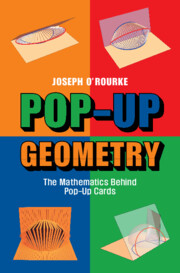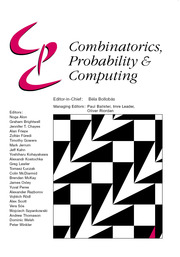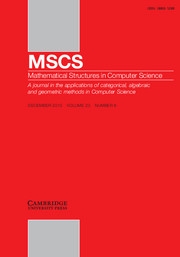Geometric Folding Algorithms
How can linkages, pieces of paper, and polyhedra be folded? The authors present hundreds of results and over 60 unsolved ‘open problems’ in this comprehensive look at the mathematics of folding, with an emphasis on algorithmic or computational aspects. Folding and unfolding problems have been implicit since Albrecht Dürer in the early 1500s, but have only recently been studied in the mathematical literature. Over the past decade, there has been a surge of interest in these problems, with applications ranging from robotics to protein folding. A proof shows that it is possible to design a series of jointed bars moving only in a flat plane that can sign a name or trace any other algebraic curve. One remarkable algorithm shows you can fold any straight-line drawing on paper so that the complete drawing can be cut out with one straight scissors cut. Aimed primarily at advanced undergraduate and graduate students in mathematics or computer science, this lavishly illustrated book will fascinate a broad audience, from high school students to researchers.
- Fascinating, tangible, accessible cutting-edge research with applications throughout science and engineering
- Full color throughout
- Top notch authors: Erik Demaine won a MacArthur fellowship in 2003 for his work on the mathematics of origami
Reviews & endorsements
"Demaine and O'Rourke are among the best-qualified authors for a book on this subject; and the book that they have written is a delight... It is exceptionally clear and readable. It could be read for pleasure by any mathematics undergraduate, and much of it (though not all) by amateurs with a high school mathematics background... Indeed, the novice will find this book an excellent introduction to complexity.) Most topics are covered in great detail; it is safe to say that even the `insider' will find something new... This book should be in all university libraries, and many professional and amateur mathematicians will want to add it to their personal collections. Origami enthusiasts may also find it of interest."
Robert Dawson, Halifax, Zentralblatt MATH
"Together, they [the authors]have assembled probably the most comprehensive book ever written about the mathematics of paper-folding. It contains theory, along with
illustrations."
Nick Robinson, British Origami Society
"This book does an excellent job of surveying the state of the art. There are copious examples and illustrations, and the authors manage to convey the excitement of working in an are where many basic questions are still unanswered."
Gregory V. Wilson, Dobbs Code Talk
"This book is one of those rare mathematics books that I had a hard time putting down. I wanted to keep reading to find the next insight... it will remain a valuable resource far into the future. There [is] a lot of material in this book and it is really a lot of fun. I highly recommend this book to anyone with even a passing interest in folding mathematics."
Collin Carbno, MAA Reviews
"Rarely can a single work serve as both a guide to a serious innovative course and as an attractive coffee-table book. This book has that distinction, and is either way irresistible to a wide range of scientists."
Harvey Cohn, Computing Reviews
"... the writing is excellent and flows well. It is a very rewarding read, appropriate for someone interested in geometry and geometric algorithms or as a resource for a university course in geometry."
Jeffrey Putnam, Computing Reviews
"Erik Demaine’s Hedrick Lectures at August’s MathFest gave a delightful and masterful summary overview of how mathematics has been applied to novel areas of geometry, such as origami, linkages, hinged dissections, and transformer figures. His beautiful book, with its full color illustrations, gives some of the details, including proofs and open problems."
Paul J. Campbell, Mathematics Magazine
Product details
May 2012Adobe eBook Reader
9781139239349
0 pages
0kg
82 b/w illus. 330 colour illus. 16 tables
This ISBN is for an eBook version which is distributed on our behalf by a third party.
Table of Contents
- Introduction
- Part I. Linkages:
- 1. Problem classification and examples
- 2. Upper and lower bounds
- 3. Planar linkage mechanisms
- 4. Rigid frameworks
- 5. Reconfiguration of chains
- 6. Locked chains
- 7. Interlocked chains
- 8. Joint-constrained motion
- 9. Protein folding
- Part II. Paper:
- 10. Introduction
- 11. Foundations
- 12. Simple crease patterns
- 13. General crease patterns
- 14. Map folding
- 15. Silhouettes and gift wrapping
- 16. The tree method
- 17. One complete straight cut
- 18. Flattening polyhedra
- 19. Geometric constructibility
- 20. Rigid origami and curved creases
- Part III. Polyhedra:
- 21. Introduction and overview
- 22. Edge unfolding of polyhedra
- 23. Reconstruction of polyhedra
- 24. Shortest paths and geodesics
- 25. Folding polygons to polyhedra
- 26. Higher dimensions.







